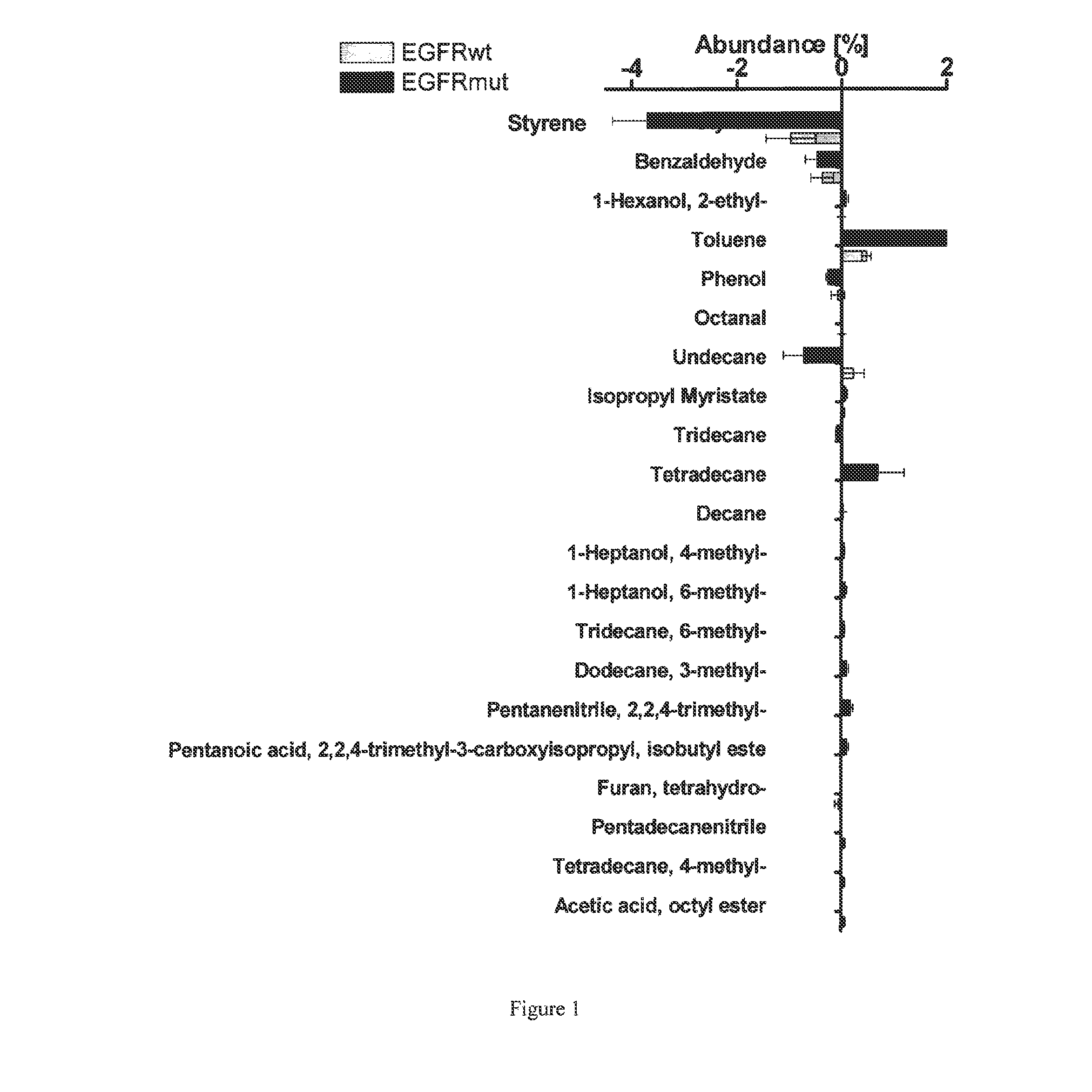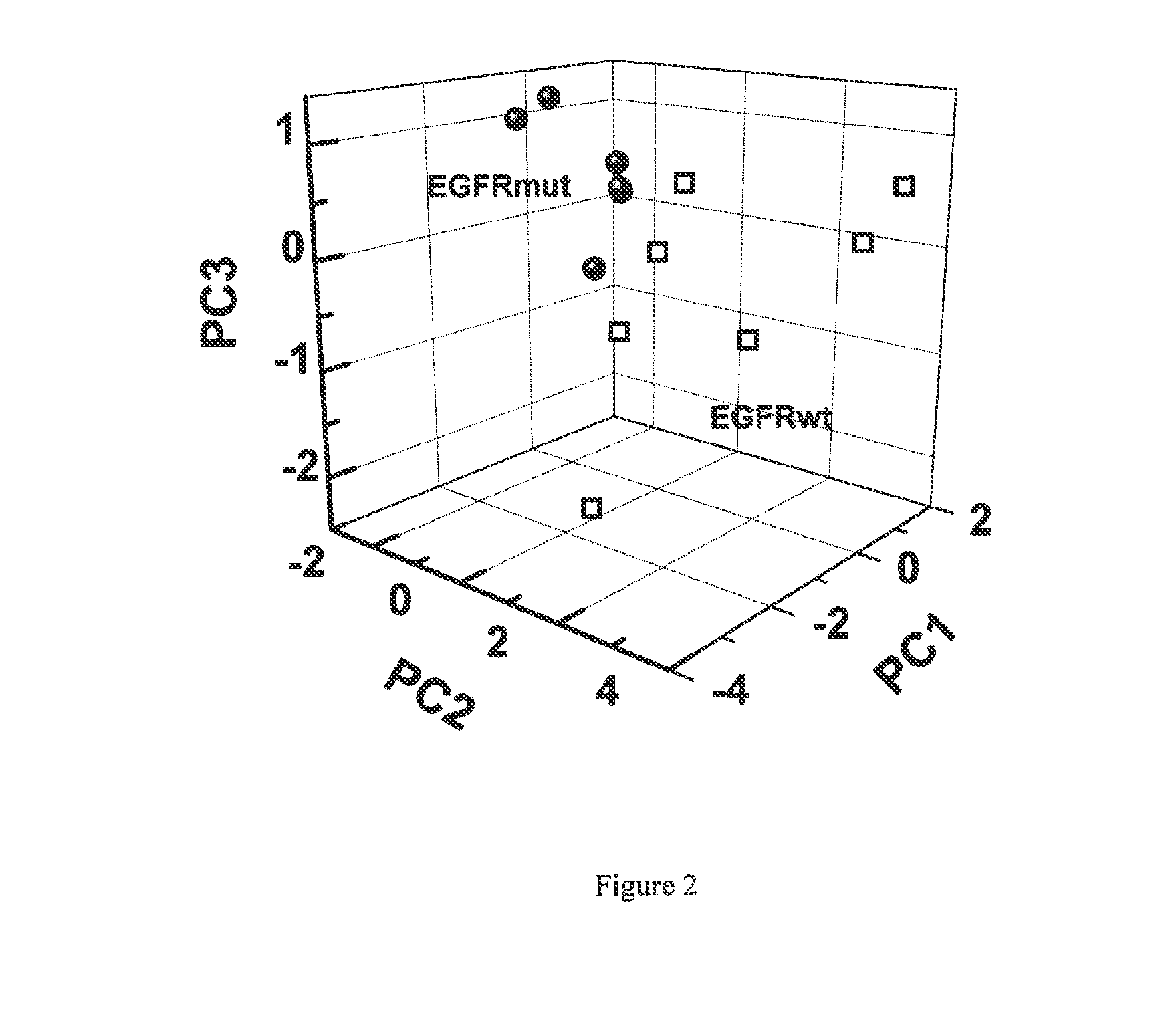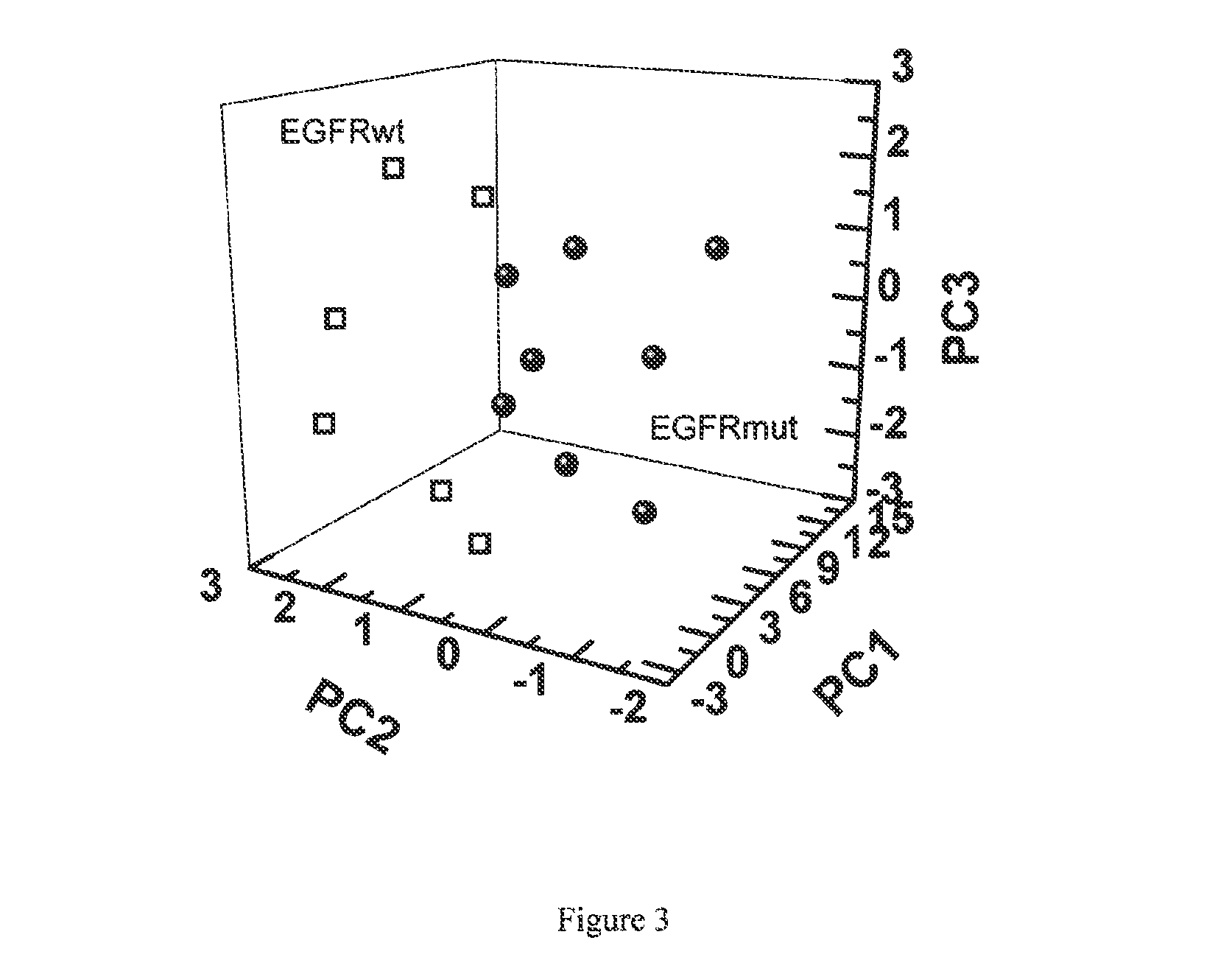Volatile organic compounds for detecting cell dysplasia and genetic alterations associated with lung cancer
- Summary
- Abstract
- Description
- Claims
- Application Information
AI Technical Summary
Benefits of technology
Problems solved by technology
Method used
Image
Examples
example 1
GC-MS Measurements
[0103]Samples were analyzed with gas chromatography-mass spectroscopy (GC-MS; GC-6890N; MS-5975; Agilent Technologies Ltd.) combined with solid phase microextraction (SPME) as described in WO 2010 / 079491, the contents of which are incorporated by reference herein. Specifically, collected VOCs from test samples and from control samples were transferred to a stainless steel device. A manual SPME holder with an extraction fiber coated with Divenylbenzene / Carboxen / Polydimethylsiloxane (DVB / CAR / PDMS) (purchased from Sigma-Aldrich) was inserted into the stainless steel device for 20-30 minutes. The extracted fiber in the manual SPME holder was inserted into a GC injector which was set to 270° C. in the splitless mode. The oven temperature profile was: 40° C., held for 4 min, 5° C. / min to 140° C., held for 4 min, 5° C. / min to 250° C., held for 4 min. Capillary column H5-5MS 5% Phenyl Methyl Siloxane (30 m length, 0.25 mm i.d., 0.25 μm thickness) was used. The column press...
example 2
Synthesis and Capping of Gold Nanoparticles and Sensor Fabrication
[0104]Gold nanoparticles having an average size of about 5 nm were capped with different organic molecules (4-methoxytoluenethiol, butanethiol, 3-methyl-1-butanethiol, 2-mercaptobenzoazole, and hexanethiol) as described in WO 2010 / 079490, the contents of which are incorporated by reference herein.
[0105]A sensors array of gold nanoparticles capped with the various organic coatings was fabricated as described in WO 2010 / 079490, the contents of which are incorporated by reference herein. In particular, functionalized gold nanoparticles having an average diameter of about 5 nm that were coated with 4-methoxytoluenethiol, butanethiol, 3-methyl-1-butanethiol, 2-mercaptobenzoazole, or hexanethiol, were dispersed in toluene by sonication, followed by a drop of the nanoparticles solution cast into the electrode. While still coated with solution, the substrate was blown with a stream of dry N2. This process was repeated several...
example 3
GC-MS Analysis of Cells
[0107]Non-Small Cell Lung Cancer (NSCLC) with or without EGFR mutations were analyzed using GC-MS in order to determine which volatile organic compounds are indicative of EGFR mutations. FIG. 1 shows the average abundance ratio of the VOCs as identified using the SPME technique in combination with GC-MS. The values presented in the figure were calculated after subtracting the mean amount of the medium on which the cells were grown. Compounds having a signal >0.02% of the total amount are presented. PCA analysis was performed for compounds with the largest difference in abundance between cells with EGFR mutants and cells with wild type EGFR. The compounds were chosen such that no overlap between the error bars of the two groups occurred. The first three principal components depicted contained >90% of the total variance in the data. (FIG. 2).
PUM
| Property | Measurement | Unit |
|---|---|---|
| Fraction | aaaaa | aaaaa |
| Fraction | aaaaa | aaaaa |
| Fraction | aaaaa | aaaaa |
Abstract
Description
Claims
Application Information
 Login to View More
Login to View More - R&D
- Intellectual Property
- Life Sciences
- Materials
- Tech Scout
- Unparalleled Data Quality
- Higher Quality Content
- 60% Fewer Hallucinations
Browse by: Latest US Patents, China's latest patents, Technical Efficacy Thesaurus, Application Domain, Technology Topic, Popular Technical Reports.
© 2025 PatSnap. All rights reserved.Legal|Privacy policy|Modern Slavery Act Transparency Statement|Sitemap|About US| Contact US: help@patsnap.com



